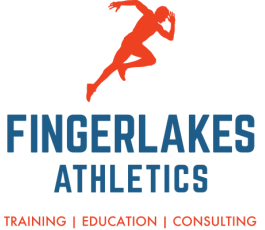|
If you’ve been watching the Olympics, you may have been mesmerized by the physical abilities of the gymnasts competing. Their ability to run, jump, leap, twist, twirl and flip is awe-inspiring. It may also leave one wondering how prone to injury they are given the skills they need to perform and the training required to reach this elite level.
Different studies cite different overall injury rates, but gymnastics generally has a greater risk of injury than many other sports. Injury rates differ between male and female gymnasts, the events and the various apparatus. Females are more likely to suffer lower extremity injuries while their male counterparts have higher levels of upper extremity injury. Due to the upper body dominant skills of the male events, they are much more likely to suffer wrist and hand injuries, whereas women are more likely to have ankle and foot injuries. For females, the most commonly suffered injury is an ankle sprain on 3 out of 4 apparatus, except for uneven bars which is upper body injury of the shoulder or wrist. As young gymnasts progress in skill and hours training, their risk of injury goes up since they spend more time under load practicing higher level skills. As they produce more force with their maneuvers, the risk of having an injury increases. Younger athletes are also prone to wrist injuries at the growth plate. As their wrists extend under a load, the forces are transmitted to the growth plate and can result in pain and injury. This is most pronounced in athletes aged 10-14 and care should be taken to assess total volume and pain at this level to avoid wrist injury or manage it early. Injuries in competition are more common as a result of performing the high level skills at higher speeds and greater heights without the benefit of crash pads and landing pits utilized in practice. Unfortunately, traumatic knee injuries, including ACL tears, are the most common cause of long term time away from sport, surgery and medical disqualification from participation. Injuries as a result of floor routines are the most common mechanism for ACL injury in gymnastics. Because of the nature of the sport, and the extreme flexibility needed to perform, gymnasts also sustain other injuries. Rates of back pain differ, but low back pain is one of the top 5 most commonly injured areas. The main concern with gymnastics is developing a stress related fracture from constant extension. With the extreme range of motion in the hip, there have been case reports of hip instability and impingement syndromes of that joint. The hours required to learn and master a maneuver can lead to gradual overload and overuse injuries. Conclusion:
References: Kerr, Z. et. al. (2015). Epidemiology of National Collegiate Athletic Association women’s gymnastics injuries, 2009-2010 through 2013-2014. Journal of Athletic Training: 50(8). Kox, L. et. al. (2015). Prevalence, incidence and risk factors for overuse injuries of the wrist in young athletes; a systematic review. British Journal of Sports Medicine: 49. Saluan, P. et. al. (2015). Injury types and incidence rates in precollegiate female gymnasts. Orthopaedic Journal of Sports Medicine: 3(4). Tirabassi, J. et. al. (2016). Epidemiology of high school sports related injuries resulting in medical disqualifaction: 2005-2006 through 2013-2014 academic years. American Journal of Sports Medicine: 20(10). Weber, A. et. al. (2014). The hyperflexible hip: managing hip pain in the dancer and gymnast. SportsHealth: 7(4). Westermann, R. et. al. (2014). Evaluation of men’s and women’s gymnastics injuries: a 10 year observational study. SportsHealth: 7 (2).
0 Comments
As a coach, you have 10 legal duties to the athletes that you coach, one of which is to evaluate for injury. Along with that goes evaluating athletes for suspected head injuries. With the current state of athletics being what it is, you cannot afford to make light of any contacts to the head. Failure to evaluate your athletes sets you, and your school, up for potential lawsuits.
In the state of New York, any suspected head injury needs to evaluated and cleared by a physician. This rule was developed in order to protect the athletes playing sports and to make the job of the coach easier; any athlete with any mechanism of potential head trauma with any symptoms of concussion are to be treated as concussed; they are to discontinue play, be monitored for signs of concussion and referred to a doctor for further evaluation, management and treatment. Many of us have grown up playing sports in an era where we were told to walk it off, that it was just a ding and nothing further was done. That is no longer the case. You cannot afford to ignore insults to the head if you coach athletics. It is better to play it safe than risk the health of the athletes you coach and your career. The article below serves as a reminder for all who coach and describes the potential consequences of not evaluating athletes who are hit in the head. http://www.athleticbusiness.com/athlete-safety/concussion-protocol-failure-can-bring-negligence-claim.html?eid=277204494&bid=1499059 |
AuthorI write on sport management, fitness, sports medicine and business topics to help you reach your goals Archives
February 2024
Categories
All
|
|
Home
About Contact |
To learn more about what services we offer, to schedule an appointment or to get prices please contact me at
[email protected] (607)279-6791 *This site is for educational purposes only, it is not meant to diagnose, treat or replace medical advice. Before starting an exercise program always make sure that you are healthy and able to do so safely.* |


 RSS Feed
RSS Feed